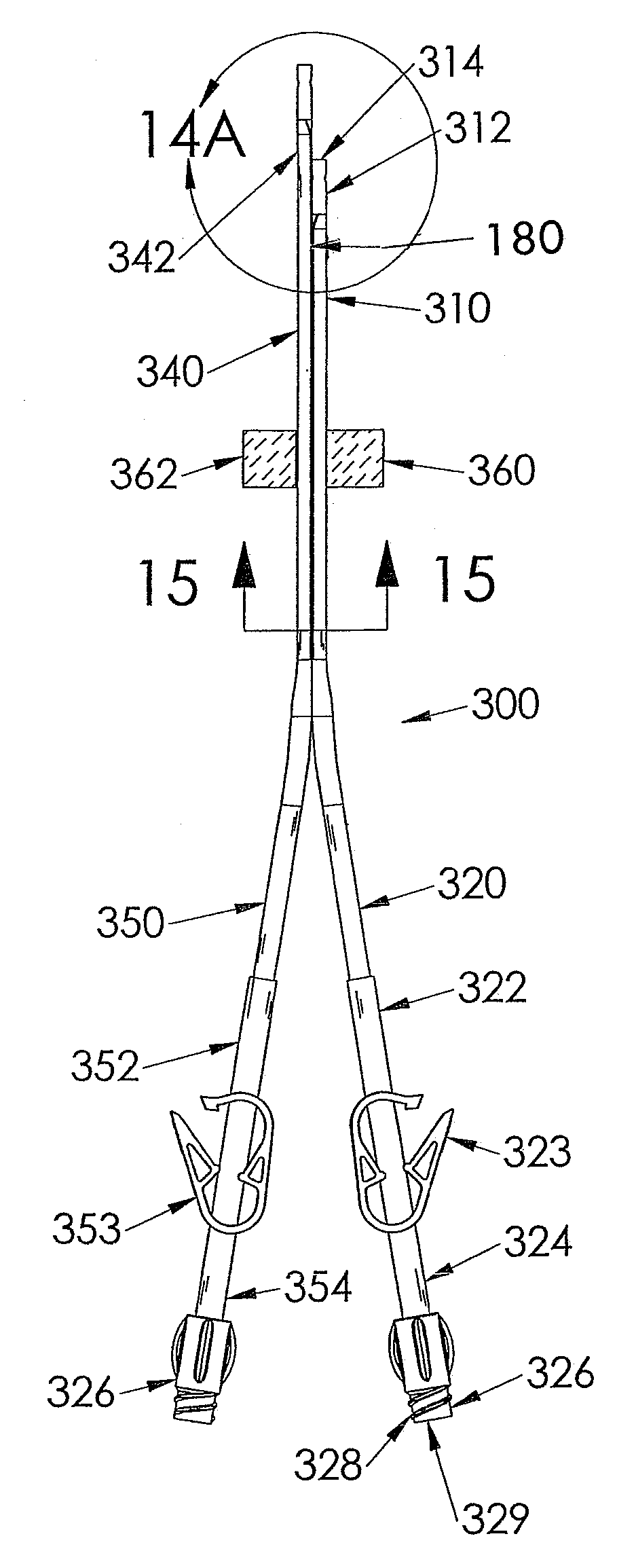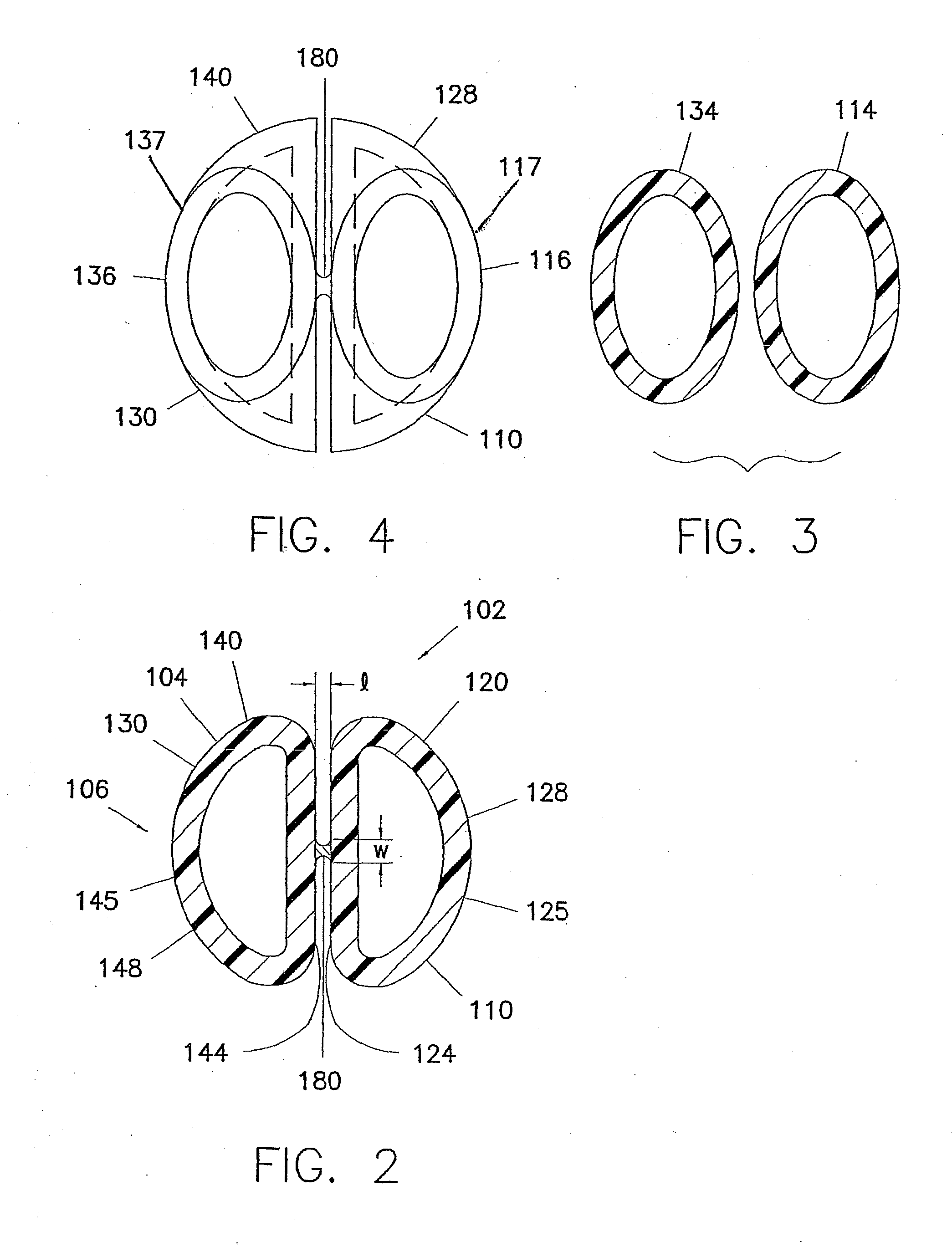Method for Inserting a Catheter
a catheter and assembly technology, applied in the direction of multi-lumen catheters, trocars, ear treatment, etc., can solve the problems of impracticality of tunneling after the catheter is installed in the patient, failure of catheter external parts of the patient, and only possible techniques
- Summary
- Abstract
- Description
- Claims
- Application Information
AI Technical Summary
Benefits of technology
Problems solved by technology
Method used
Image
Examples
Embodiment Construction
[0040]In the drawings, like numerals indicate like elements throughout. Certain terminology is used herein for convenience only and is not to be taken as a limitation on the present invention. The terms “distal” and “proximal” refer, respectively, to the directions “away from” and “closer to” the surgeon inserting the catheter into a patient. The terminology includes the words above specifically mentioned, derivatives thereof, and words of similar import.
[0041]The following describes preferred embodiments of the invention. However, it should be understood, based on this disclosure, that the invention is not limited by the preferred embodiments described herein. Referring now to the drawings in detail, there is shown in FIG. 1, an embodiment of a multiple catheter assembly generally indicated as 100. The multiple catheter assembly 100 shown in FIG. 1 is a double catheter assembly, although assemblies having two or more catheters are within the scope of this invention.
[0042]The invent...
PUM
 Login to View More
Login to View More Abstract
Description
Claims
Application Information
 Login to View More
Login to View More - R&D
- Intellectual Property
- Life Sciences
- Materials
- Tech Scout
- Unparalleled Data Quality
- Higher Quality Content
- 60% Fewer Hallucinations
Browse by: Latest US Patents, China's latest patents, Technical Efficacy Thesaurus, Application Domain, Technology Topic, Popular Technical Reports.
© 2025 PatSnap. All rights reserved.Legal|Privacy policy|Modern Slavery Act Transparency Statement|Sitemap|About US| Contact US: help@patsnap.com



